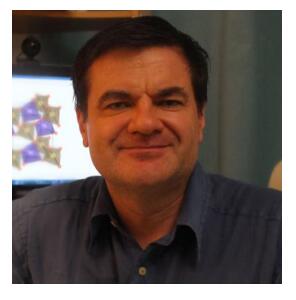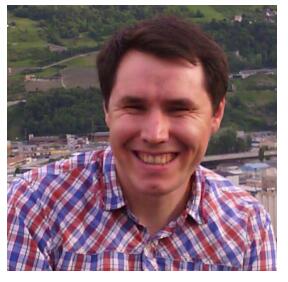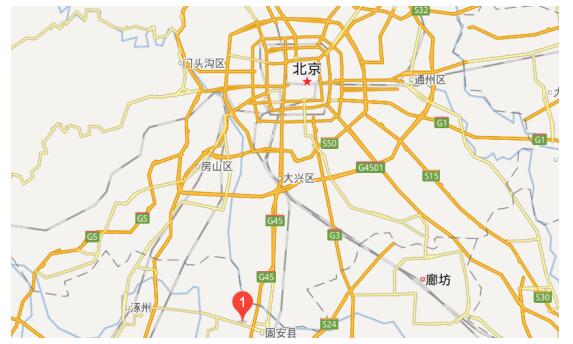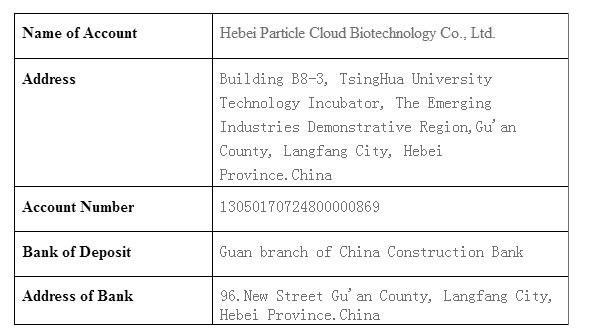Topological Methods in Materials Science BeiJing October 2017
Time:2018-02-03
1.Introduction and motivation
At this school we consider qualitative and semi-quantitative geometrical and topological approaches in crystal chemistry for comprehensive crystal structure description and rapid data mining.
The topological methods have been dramatically developed in the past 15 years and proved their effectiveness for systematization and rationalization of huge amounts of crystal data. The program package, where the geometrical and topological approaches, algorithms, and software are implemented most comprehensively is ToposPro (http://topospro.com); other programs like Gavrog Systre and 3dt (http://gavrog.org) are intended for more special tasks. The topological databases (TOPOS TTD, TTO, TTR, TTM, TTL, TTN, TTA, TTS collections, RCSR and EPINET databases) include more than 100,000 topological types of underlying topologies that can occur in extended crystalline architectures as well as in molecular crystals. Many of these resources are available for free and become more and more popular; now the description of the overall topology of new structures becomes ordinal in such journals as CrystEngComm or Crystal Growth & Design. The search for relations between local topology of coordination groups, coordination abilities of metal atoms and ligands on the one hand and the overall topology of the whole network becomes one of the important tasks in the structure investigations.
These relations could be important to create first expert systems in crystal design; the knowledge database of such systems could rest upon the topological databases, while the inference machine could use the relations to provide an expert conclusion about the possibility of appearance of a particular topological motif. Thus the topological approaches are crucial for taxonomy of the experimental information and for developing predictive tools.
At the same time, the topological methods, being able to work with large samples of crystallographic data, provide only qualitative or semi-quantitative prediction. To make it precise we need to merge the topological methods with the quantitative methods of mathematical modelling. Recent progress in theoretical materials science is especially caused by development of Density Functional Theory, which is a basis of quantum mechanical calculations of various crystal properties. The present state of theoretical calculations in quantum chemistry and solid state physics can be considered as an ab initio approach. It means that we can describe already known crystalline structures, predict new crystalline materials and perform calculations of their physical properties without any empirical parameters. An important part of this ab initio approach is the high-performance numerical calculations on supercomputers or cluster systems.
2.Contents and objectives
The main goal of this tutorial is to give an introduction to this whole new area that we call Topological Crystal Chemistry and to show how the topological methods and tools can be used together with the DFT methods for creating expert systems in materials science. We will give the full introduction to the topological methods and will briefly consider their combination with the DFT methods. There will be large time dedicated to hands-on session on the use of the novel and still not so widespread computer methods/software/databases so the student at the end of the course will be able to analyze any kind of extended structure through the eye of the topology and describe it in term of nets, entanglements, catenation etc. A special attention will be paid to the analysis of various classes of crystalline materials, in particular, MOFs, supramolecular crystals, zeolites, fast-ion conductors, intermetallics. All participants will have an ability to analyze their own crystal structures with the help of tutors that will be available also in the evening time. The final session will be devoted to summarize the results of such personal/free works.
The tutorial will start with a theoretical introduction, where the background of the topological methods will be briefly, but rigorously, considered. No special mathematical skills are required, but the participants have to be aware of crystal chemistry and crystallography basics. The main abilities, problems, and perspectives of topological analysis of crystalline networks will be outlined.
The main part of the tutorial will be devoted to practical works with ToposPro. All participants will get the ToposPro Practical Manual that contains the detailed description of all practical works. New on-line services, which provide access to topological knowledge databases, will be considered for the first time.
3.Lecturer:
Prof. Vladislav A. Blatov
Samara Center for Theoretical Materials Science (SCTMS), Samara University, Russia
Northwestern Polytechnical University, Xi'an, People’s Republic of China
Vladislav A. Blatov graduated from Samara State University (1987) and got degrees of Candidate (1991) and Doctor in Chemistry (1998) from the Institute of General and Inorganic Chemistry (Moscow). He is Full Professor at SSU Chemistry Department since 1998 and Director of Samara Center for Theoretical Materials Science (SCTMS) since 2013. In 2017, he became an Adjunct Professor at School of Materials Science and Engineering in Northwestern Polytechnical University. His research and educational interests concern geometrical and topological methods in crystal chemistry and their computer implementation in the program package TOPOS/ToposPro being developed since 1989.

Tutor:
Dr. Eugeny V. Alexandrov
Samara Center for Theoretical Materials Science (SCTMS), Samara University, Russia
Eugeny V. Alexandrov is research associate in Samara Center for Theoretical Materials Science of Samara University (Russia). He graduated from Samara State University in 2009 and in 2014 obtained his PhD in Inorganic Chemistry from Nikolaev Institute of Inorganic Chemistry (Novosibirsk, Russia). His area of expertise is topological analysis of coordination polymers and its application to design of new materials. Eugeny published 12 papers in high-impact journals and participated in development of ToposPro Topological Types Collections. Dr. Alexandrov was a tutor at five previous ToposPro schools.

School purposes:
The participants will gain the following knowledge:
· a general view of modern topological methods in crystal chemistry and materials science, the corresponding algorithms, software, databases, and expert systems;
· a skill in application of these tools to various classes of crystal structures and crystalline materials;
· a vision of how to apply the software and databases to investigate the participant’s own specific field of science;
· ideas of how to use together the topological and DFT methods to design new materials and predict their physical properties.
4. Programme
1st day
900-915 Welcome and Introduction
915-1045 V.A. Blatov, Lecture “V.A. Blatov, Lecture “Computer crystallochemical analysis: an introduction””
1045-1100 Coffee break
1100-1230 V.A.Blatov, E.V. Alexandrov, Exercises “Introduction to ToposPro”
1230-1400 Lunch
1400-1530 V.A.Blatov, E.V. Alexandrov, Exercises “Visualization of 0D, 1D, 2D and 3D structures”
1530-1545 Coffee break
1545-1715 V.A. Blatov, Lecture “Methods, software, databases, and expert systems for crystallochemical analysis”
1715-1800 Q&A
2nd day
900-1030 V.A. Blatov, E.V. Alexandrov, Exercises “Methods of simplification of crystal structures”
1030-1045 Coffee break
1045-1215 V.A. Blatov, E.V. Alexandrov, Exercises “Topological identification of nets. Working with the TTD collection and SCTMS Online Services”
1215-1400 Lunch
1400-1530 V.A. Blatov, E.V. Alexandrov, Exercises “Analysis of molecular crystals and metal-organic frameworks with topological methods”
1530-1545 Coffee break
1545-1715 V.A. Blatov, E.V. Alexandrov, Exercises “Computing natural tilings and their parameters with ToposPro. Analysis of zeolites and fast-ion conductors”
1715-1800 Q&A
3rd day
900-945 V.A. Blatov, E.V. Alexandrov, Exercises “Nanocluster representation of intermetallic compounds”
945-1030 V.A. Blatov, E.V. Alexandrov, Exercises “Combining topological and DFT methods”
1030-1045 Coffee break
1045-1215 V.A. Blatov, E.V. Alexandrov, Exercises “Data mining and knowledge databases in crystal chemistry and materials science”
1215-1230 Summary and Conclusions
5.Address and Date
Address:Building B8-3, TsingHua University Technology Incubator, The Emerging Industries Demonstrative Region,Gu'an County, Langfang City, Hebei Province.China(Beijing South 50KM)
Date:October 13-15,2017

6.Conference Fees

Please note the meeting name and unit of Attendance.
Conference account information:

Conference fee of general and student includes,conference training,study guide,super computer service,lunch and hotel expense.
7.Contact Us
Ning Liu
Building B8-3, TsingHua University Technology Incubator, The Emerging Industries Demonstrative Region,Gu'an County, Langfang City, Hebei Province.China
Tel: +86-18392968314
E-mail:liuning@dianyunkeji.com
Bingyao Guo
Building B8-3, TsingHua University Technology Incubator, The Emerging Industries Demonstrative Region,Gu'an County, Langfang City, Hebei Province.China
Tel: +86-15686222477
E-mail:guoby@dianyunkeji.com
It is list of high level paper that is used by the teachers and the students about TOPOS Pro software.
1. Anderson M W, Gebbie-Rayet J T, Hill A R, et al. Predicting crystal growth via a unified kinetic three-dimensional partition model[J]. Nature, 2017, 544(7651): 456-459.
2. Strobel P, Schmiechen S, Siegert M, et al. Narrow-band green emitting nitridolithoalumosilicate Ba[Li2(Al2Si2)N6]: Eu2+ with framework topology whj for LED/LCD-backlighting applications[J]. Chemistry of Materials, 2015, 27(17): 6109-6115.
3. Yao S, Wang D, Cao Y, et al. Two stable 3D porous metal-organic frameworks with high performance for gas adsorption and separation[J]. Journal of Materials Chemistry A, 2015, 3(32): 16627-16632.
4. Wu J, Tao C, Li Y, et al. Methyl viologen-templated zinc gallophosphate zeolitic material with dual photo-/thermochromism and tuneable photovoltaic activity[J]. Chemical Science, 2015, 6(5): 2922-2927.
5. Oike H, Kikkawa A, Kanazawa N, et al. Interplay between topological and thermodynamic stability in a metastable magnetic skyrmion lattice[J]. Nature Physics, 2016, 12(1): 62-66.
6. He C T, Liao P Q, Zhou D D, et al. Visualizing the distinctly different crystal-to-crystal structural dynamism and sorption behavior of interpenetration-direction isomeric coordination networks[J]. Chemical Science, 2014, 5(12): 4755-4762.
7. Yi F Y, Wang Y, Li J P, et al. An ultrastable porous metal-organic framework luminescent switch towards aromatic compounds[J]. Materials Horizons, 2015, 2(2): 245-251.
8. Katsenis A D, Puskaric A, Strukil V, et al. In situ X-ray diffraction monitoring of a mechanochemical reaction reveals a unique topology metal-organic framework[J]. Nature communications, 2015, 6: 6662.
9. Pang J, Jiang F, Wu M, et al. A porous metal-organic framework with ultrahigh acetylene uptake capacity under ambient conditions[J]. Nature communications, 2015, 6: 7575.
10. Hu Z, Lustig W P, Zhang J, et al. Effective detection of mycotoxins by a highly luminescent metal–organic framework[J]. Journal of the American Chemical Society, 2015, 137(51): 16209-16215.
11. Douvali A, Tsipis A C, Eliseeva S V, et al. Turn On Luminescence Sensing and Real Time Detection of Traces of Water in Organic Solvents by a Flexible Metal–Organic Framework[J]. Angewandte Chemie, 2015, 127(5): 1671-1676.
12. Liu C S, Zhang Z H, Chen M, et al. Pore modulation of zirconium organic frameworks for high-efficiency detection of trace proteins[J]. Chemical Communications, 2017, 53(28): 3941-3944.
13. Holzmann T, Schoop L M, Ali M N, et al. Li0.6[Li0.2Sn0.8S2]- a layered lithium superionic conductor[J]. Energy & Environmental Science, 2016, 9(8): 2578-2585.
14. Chakraborty J, Nath I, Verpoort F. Snapshots of encapsulated porphyrins and heme enzymes in metal-organic materials: A prevailing paradigm of heme mimicry[J]. Coordination Chemistry Reviews, 2016, 326: 135-163.
15. Yuan S, Chen Y P, Qin J S, et al. Linker installation: engineering pore environment with precisely placed functionalities in zirconium MOFs[J]. Journal of the American Chemical Society, 2016, 138(28): 8912-8919.









